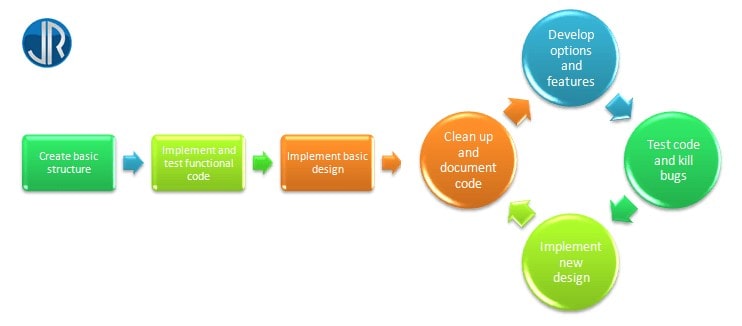The technique of running several code sequences concurrently within a program to improve efficiency and speed is known as concurrent coding. Using several threads or processes, it entails breaking up work into smaller, autonomous pieces that may operate concurrently. Applications needing great responsiveness, such as data processing, gaming, and real-time systems, must use this strategy. By utilizing contemporary multi-core computers, concurrent coding facilitates quicker computation and more efficient use of resources. To handle any conflicts, it makes use of ideas like thread synchronization, mutexes, and parallel algorithms. Concurrent code is strong, but it must be carefully planned to prevent problems like race situations and deadlocks.
Table of Contents
What is Concurrent Coding and Why It’s Essential
By evaluating paperwork and assigning diagnostic codes while the patient is still receiving therapy, concurrent coding allows medical coders to be incorporated into the care process. Concurrent coding enables the real-time recording of all pertinent patient data, in contrast to typical retrospective coding, which takes place after patient discharge. Together with physicians, coders make sure that all conditions, treatments, and diagnostic information are properly recorded and coded. What makes concurrent coding essential, then? With changes like the CMS v24 to v28 transition posing new difficulties, the healthcare environment is continuously changing. Concurrent coding makes sure that documentation is always accurate and comprehensive, which helps facilities adjust to these changes with ease. Through more precise risk adjustment, it assists healthcare providers in maintaining compliance, lowering coding mistakes, and improving financial results.
Benefits of Concurrent Coding
Improved Accuracy and Compliance
One of concurrent coding’s most significant advantages is reducing errors. By working alongside clinicians, coders can ask questions and seek clarification in real time, ensuring that documentation accurately reflects the complexity of patient care. This immediate collaboration reduces the likelihood of missed diagnoses or incomplete records, which is crucial for compliance, especially with the new requirements introduced from v24 to v28.
Reduced Risk of Audit Penalties

Financial fines and audits may result from inaccurate or insufficient coding. By making sure that all pertinent information is recorded as it occurs and reducing the possibility of errors, concurrent coding reduces these risks. When adjusting to new rules, healthcare institutions need to have trust in their documentation and coding procedures, which is what our proactive strategy provides.
Optimized Reimbursement
In order to maximize compensation, accurate documentation is essential. Healthcare practitioners can improve risk adjustment scores and increase reimbursements by using contemporaneous coding to make sure that all pertinent diagnoses and treatments are recorded. In the Medicare Advantage market, where accurate coding has a direct influence on financial results, this is particularly crucial.
Streamlined Workflow and Efficiency
Clinical teams can reduce their administrative workload by using concurrent coding. There is less back and forth to explain paperwork after discharge when coders are active throughout patient care. This results in a more effective workflow, enabling coders to manage their workload even when new coding models are introduced and physicians to concentrate on patient care.
Best Practices for Implementing Concurrent Coding

Train Coders and Clinicians for Collaboration
Coders and doctors must work together seamlessly for concurrent coding to be effective. Open communication and mutual understanding of duties are essential for both sides. Coders can learn more about clinical terminology and processes through training programs. Clinicians also understand the value of thorough documentation at this time. Establishing a collaborative culture guarantees effective cooperation between the two sides.
Invest in Technology for Real-Time Documentation
Access to current patient data is necessary for concurrent coding. Invest in cutting-edge technological solutions that facilitate documentation and real-time data sharing. When coding software is integrated with Electronic Health Records (EHRs), coders may collaborate with physicians immediately. Tools that offer real-time compliance checks can help with the v24 to v28 transition and further minimize mistakes.
Set Up Regular Audits for Quality Assurance
Regular audits are necessary to guarantee high levels of correctness and compliance, even when concurrent coding is used. Audits may assist in pinpointing areas that require improvement and guarantee that the adoption of new coding models, such as v28, is managed appropriately. Additionally, quality assurance inspections offer a chance for continuous training and process improvement.
Establish Clear Communication Channels
For concurrent coding to be successful, communication is essential. Through frequent check-ins, shared digital platforms, or face-to-face collaborations, clearly define the rules for communication between coders and physicians. Effective communication lowers the possibility of mistakes and delays by ensuring that documentation concerns are promptly rectified.
Provide Continuous Education and Training
Regulations and coding models are always changing. Healthcare institutions must spend money on continuing education for their coding personnel in order to remain compliant. Coders are kept informed and ready by regular training sessions on changes, such as the switch from version 24 to version 28. Coders maintain their proficiency with the newest coding tools and software through ongoing study.
Preparing for the v24 to v28 Transition

Healthcare institutions must adjust to new rules and requirements brought about by the CMS programming model change from version 24 to version 28. Because concurrent coding guarantees that documentation is constantly up-to-date and compatible, it offers a strong basis for handling this shift. Healthcare practitioners may preserve high levels of accuracy and more easily manage these changes by putting the above-mentioned best practices into effect.
Conclusion
Concurrent coding shows up as a progressive answer in the complicated healthcare environment of today when code modifications such as the move from v24 to v28 create new difficulties. By lowering mistakes and audit risks, it improves documentation accuracy and compliance and maximizes financial results. Healthcare institutions that engage in technology, training, and teamwork may successfully use concurrent coding and remain ahead of regulatory changes.
The advantages are obvious: improved patient care, more efficient processes, and more precise risk adjustment coding. It is not only advised but also required for healthcare professionals who are under pressure to stay up to date with changing coding rules to implement concurrent coding. Facilities may successfully apply these tactics with seasoned partners like RAAPID, guaranteeing long-term success and compliance in a dynamic environment.



